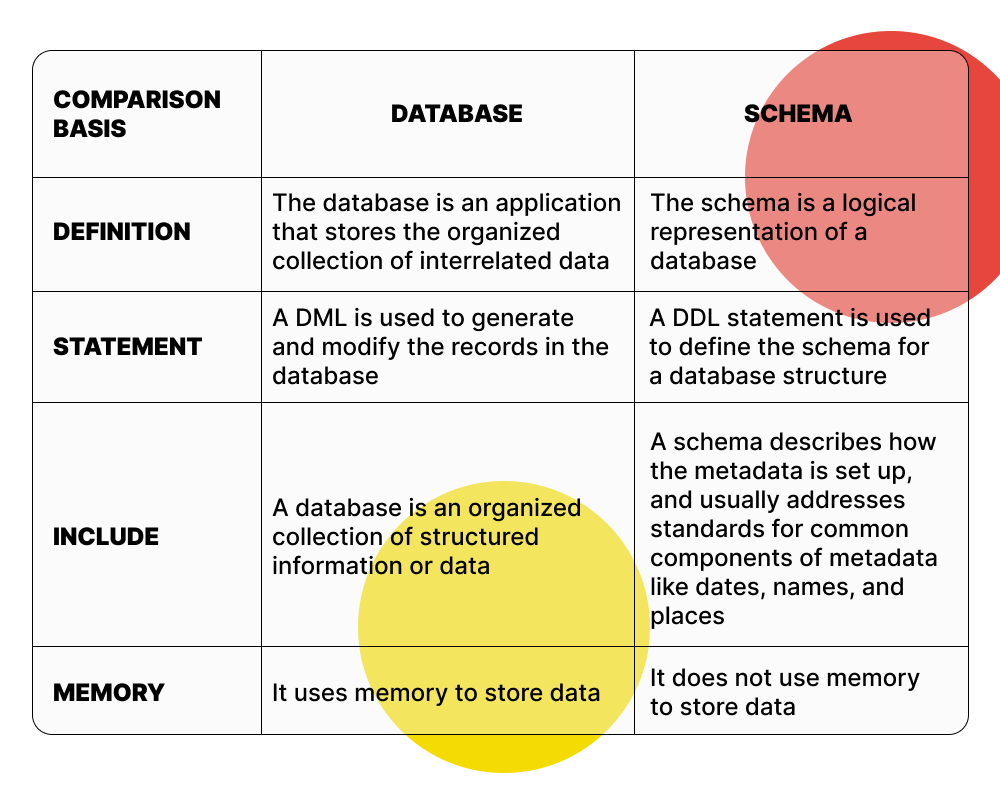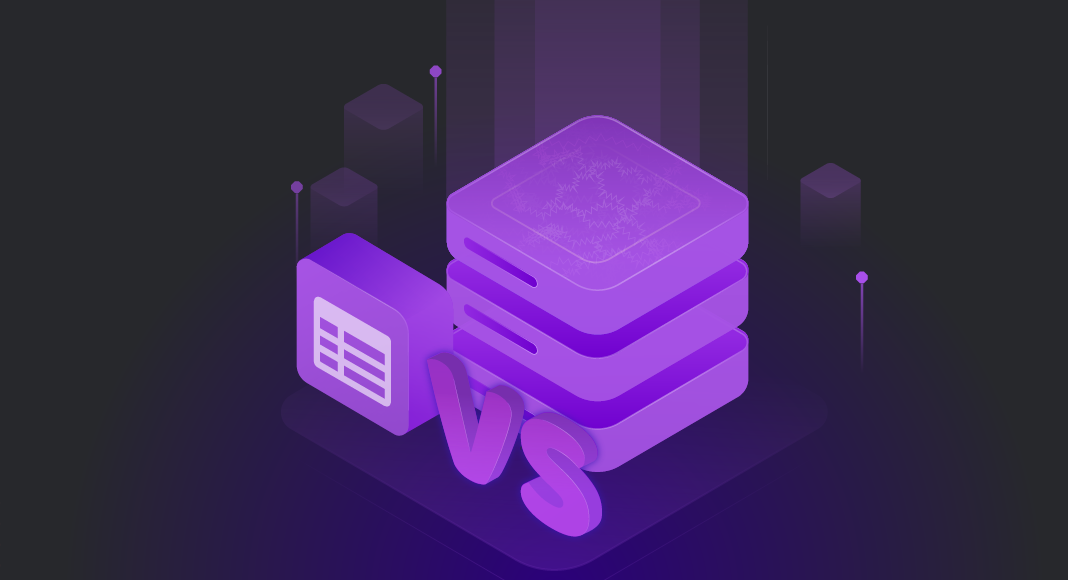TL;DR
The difference between schema and database lies in their roles: a database stores data, while a schema defines its structure. A database is a container for information; a schema is a blueprint for organizing tables, views, and procedures. Most RDBMSs treat them as distinct, except for MySQL, where the terms are often used interchangeably.
Today, we are going to talk about whether schema and database is the same. To be more precise, we will describe the main differences between these two terms in general. After that, we will take a closer look at the differences between databases and schemas in the following relational database management systems: SQL Server, MySQL, PostgreSQL, and Oracle.

Before getting into the differences themselves, let us define both terms.
What is a database?
First things first: a database (often referred to as DB) is an organized structure designed to store, modify, and process related information, mostly in large volumes. Databases are actively used for dynamic sites with significant amounts of data. Often, these are online stores, portals, and corporate websites. Such websites are usually developed using a server-side programming language (for example, PHP) or based on a CMS (for example, WordPress), and do not have ready-made data pages by analogy with HTML sites. Pages of dynamic sites are formed on the fly as a result of the interaction of scripts and databases after a corresponding request from the client to the webserver.
What is a schema?
On the contrary, the term database schema can mean either a visual data representation, a set of rules it is subject to, or a complete set of objects owned by a particular user. An easy way to imagine a schema is to think of it as a field that contains tables, stored procedures, views, and related data resources. The schema defines the infrastructure of this field.
What is the main difference between database and schema?
Taking into account the above-mentioned definitions, let us derive the key differences between the two.
A database is any collection of data. The data in a database is usually organized in such a way that the information is easily accessible. A schema is basically a formal description of how a database is formed and where everything is located. It works as a blueprint that shows where everything is in the database and how it is structured.
Database vs. Schema Comparison Table
For better understanding, we have created a comparison table with a set of the main differences between a database and schema:

It is important to differentiate between the logical concept of a schema that exists regardless of a specific DBMS and schema as a physical object. This logical concept is synonymous with the structure or model of a database. Now, let us look a little bit deeper into the peculiarities of schemas as physical objects in different RDBMSs.
To better understand the database schema and relationships between objects, use database diagram design tool for SQL Server.
Database vs. Schema in PostgreSQL
As to PostgreSQL, a database can be defined as a container with all the schemas, records, logs, and table constraints. Databases are strictly separated, which means that a user cannot access two databases at once. Use DML (Data Manipulation Language) commands in order to manipulate data in the PostgreSQL database.
A schema in PostgreSQL determines how the data is logically structured and stored in a database. It contains all the indexes, tables, functions, data types, stored procedures, and anything that might be related. Database administrators can set different levels of access for different users in order to avoid conflicts and unnecessary interference.
Database vs. Schema in SQL Server
In the context of SQL, use Data Definition Language (DDL) for creating and modifying database objects. In case you are looking for a better understanding of a SQL schema, please refer to another blog article of ours.
Both in SQL Server and PostgreSQL, a schema is a physical database object that stores other database objects.
Database vs. Schema in Oracle
In Oracle, a database consists of physical files that contain data and metadata. These include the datafiles, controlfiles, and redo log files.

Unlike SQL Server and PostgreSQL, there is no separate schema object. However, if a user becomes an owner of any objects like tables, views, etc., it is treated as a schema.
At the same time, working with a database in Oracle is almost identical to working with SQL Server. Namely, users connect to an Oracle server and work with the schemas just like they do with databases in SQL Server.
A database instance in Oracle comprises a memory that is shared and accessed by all the threads and background processes. This includes the SGA, PGA, and background processes such as RECO, SMON, DBWO, PMON, CKPT, ARCO, etc.

Database vs. Schema in MySQL
In MySQL, there is no such object as schema. Sometimes, a schema is used as a synonym for a database. In MySQL syntax, you can easily substitute the SCHEMA keyword with the DATABASE keyword. This way, using CREATE SCHEMA will give you the same result as CREATE DATABASE.
Conclusion
To sum up, database and schema are different things in all RDMSs, except MySQL. A database is more about data and content, while a schema is more about the structure of the said data. If you are working with databases on a daily basis, Devart offers a range of products that can help you improve database development, management, and administration. Moreover, we can boast powerful, fast, and easy-to-use schema comparison tools for SQL Server, MySQL, PostgreSQL, and Oracle.

